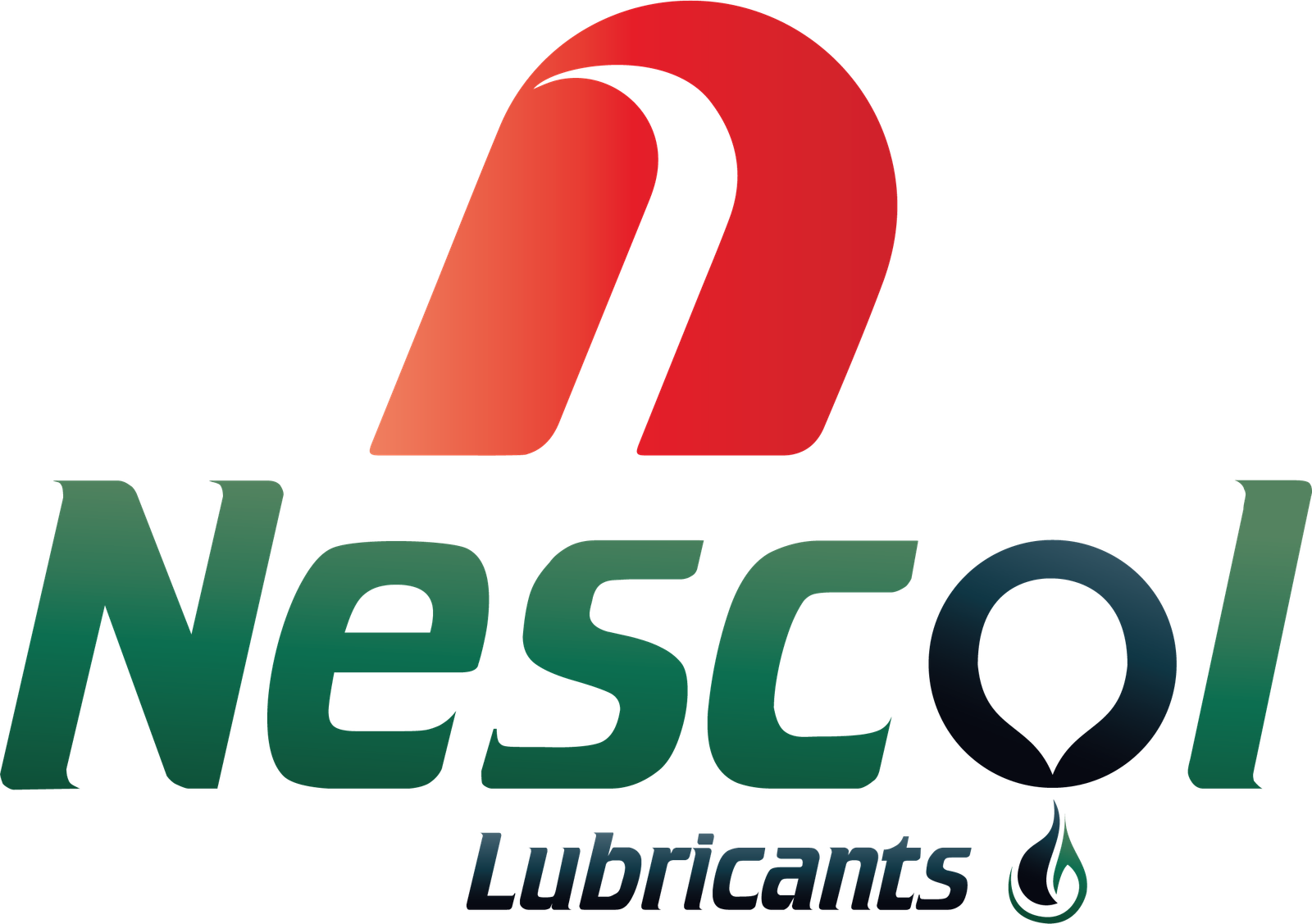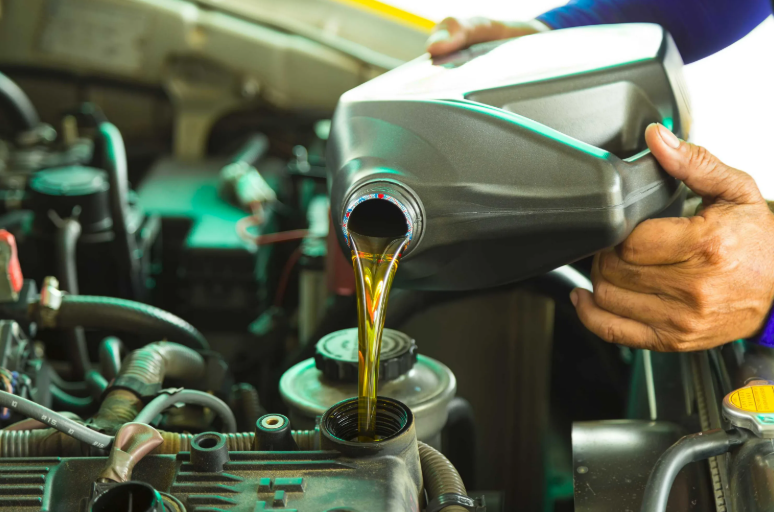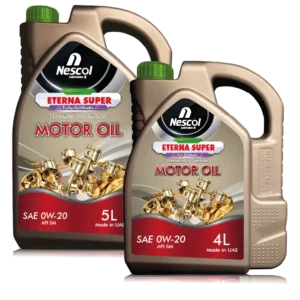Introduction: Best Engine Oil In UAE
In the heart of the United Arab Emirates, where sun-scorched highways meet towering cityscapes, your car is more than just a mode of transport—it’s a vital companion. It braves extreme temperatures, relentless humidity, and frequent stop-and-go traffic. Protecting this investment requires more than just regular washes; it demands meticulous internal care. And nothing is more critical to your engine’s health and longevity than the quality of the motor oil you choose.
Selecting the best engine oil isn’t about picking the most expensive brand on the shelf. It’s a nuanced decision based on your vehicle’s make, model, driving habits, and, most importantly, the unique challenges of the UAE climate. This definitive guide is designed to cut through the confusion. We will delve into the science of lubrication, decode oil specifications, and help you answer the pivotal question: Which motor oil is best for my car in the UAE?
We will also highlight the role of best engine oil brand in UAE, such as Nescol Lubricants, who understand regional demands and offer tailored solutions for every engine type.
Why the Right Engine Oil is Non-Negotiable in the UAE
The UAE’s environment is an engine’s ultimate stress test. Here’s why your choice of best car engine oil matters immensely:
Extreme Heat: Ambient temperatures regularly exceed 45°C (113°F). Under the hood, it’s even hotter. Conventional oils can thin out, losing their protective viscosity and leading to increased wear, friction, and the risk of engine seizure.
High Humidity: Coastal areas like Dubai and Abu Dhabi have high salt content in the air. This can lead to increased corrosion and oxidation inside the engine. High-quality oils contain additives that combat these corrosive elements.
Dust and Sand: Fine abrasive particles can find their way into the engine, acting like sandpaper on精密 components. A robust oil must hold these particles in suspension until the oil filter can remove them.
Demanding Driving Conditions: Frequent short trips, idling in traffic, and aggressive highway driving put additional thermal and mechanical stress on the oil, causing it to break down faster.
Using the wrong oil accelerates engine wear, reduces fuel efficiency, increases emissions, and can lead to catastrophic and expensive failures.
Decoding the Language of Motor Oil: Viscosity and Standards
To choose wisely, you must speak the language. Let’s break down the codes on every oil bottle.
Understanding Viscosity (e.g., 5W-30, 10W-40)
Viscosity is the oil’s resistance to flow. It’s not about thickness alone; it’s about how that thickness changes with temperature. This is denoted by a two-number code like 5W-30.
The first number (e.g., 5W): The “W” stands for Winter. This number indicates the oil’s flow at cold temperatures (0°F or -17.8°C). A lower number (e.g., 0W, 5W) means the oil flows more easily when cold, ensuring critical lubrication at startup—a moment where most engine wear occurs.
The second number (e.g., 30, 40): This represents the oil’s viscosity at the engine’s operating temperature (100°C or 212°F). A higher number means the oil is thicker at high temperatures, maintaining a protective film under heat and load.
For the UAE: A higher second number is often recommended. While many modern European and Japanese cars specify 5W-30 or 0W-20 for fuel efficiency, the extreme heat may make a 5W-40 or 10W-40 a more robust choice for older models or high-performance engines. Always consult your owner’s manual first, but be prepared to discuss a slightly higher high-temperature viscosity with your mechanic for added protection.
Understanding Oil Standards: API and ACEA
These are performance specifications set by industry bodies.
API (American Petroleum Institute): Uses a two-letter code like “SP.” “S” for Spark-ignition (gasoline) engines, and “C” for Compression-ignition (diesel) engines. The second letter denotes the performance level; later in the alphabet is better (e.g., SP is newer and higher performing than SN).
ACEA (European Automobile Manufacturers’ Association): Often considered more stringent, it has sequences like A3/B4 for high-performance gasoline and diesel engines. European car brands (VW, BMW, Mercedes) often mandate specific ACEA ratings.
Using an oil that meets or exceeds your manufacturer’s specified standard is mandatory.
The Three Main Types of Engine Oil: Which One is for You?
1. Conventional Motor Oil
What it is: Refined directly from crude oil.
Best for: Car motor oil for old car models with simple engine designs and high mileage where thick sludge might actually be sealing small leaks.
Pros: Most affordable option.
Cons: Offers the least protection, breaks down fastest under high heat and stress. Not ideal for most modern UAE-driven vehicles.
2. Synthetic Blend Motor Oil
What it is: A mixture of conventional and synthetic base oils.
Best for: Drivers who need better protection than conventional oil offers but want to keep costs moderate. Good for SUVs and trucks that frequently carry heavy loads.
Pros: Better resistance to oxidation and superior low-temperature performance than conventional oil at a reasonable price point.
Cons: Doesn’t offer the full spectrum of protection offered by full synthetics.
3. Full Synthetic Motor Oil
What it is: Chemically engineered from petrochemicals to have a uniform molecular structure, free from the impurities of conventional oil.
Best for: The unequivocal best choice for most cars in the UAE. Especially crucial for:
Modern turbocharged and supercharged engines (common in many cars here) that run much hotter.
High-performance luxury and sports cars.
Vehicles subjected to extreme heat, frequent short trips, and heavy towing.
Newer cars where the manufacturer recommends or requires it.
Pros: Superior thermal stability (resists thinning in heat), excellent flow in cold weather, maximizes engine cleanliness, reduces wear, and improves fuel economy.
Cons: Highest cost, but the extended drain intervals and superior engine protection make it cost-effective in the long run.
In-Depth Focus: Nescol Lubricants for the UAE Market
Nescol Lubricants is a prominent brand in the GCC region, formulating products specifically to withstand the harsh conditions outlined above. Their philosophy is built on providing tailored solutions rather than a one-size-fits-all approach. Let’s analyze their core product lines.
Nescol Ultra Synthetic Range (Fully Synthetic)
This is their flagship range, designed for maximum protection and performance.
Technology: Typically uses high-quality Group III+ or Group IV (PAO) synthetic base oils blended with a robust additive package containing anti-wear agents (e.g., Zinc Dialkyl Dithiophosphate), detergents, dispersants, and antioxidants.
Target Vehicles: Modern turbocharged gasoline and diesel engines, high-performance luxury vehicles, and any car where the owner demands the highest level of protection.
Key Specifications: Likely to carry API SP and key ACEA specifications like C3 or A3/B4. May also meet various OEM approvals.
Pros:
Exceptional Thermal Stability: Resists thinning in extreme UAE heat, maintaining protective viscosity.
Low Volatility: Reduces oil consumption and evaporation loss.
Superior Engine Cleanliness: Advanced detergents prevent sludge and deposit formation, keeping the engine internally clean.
Enhanced Fuel Economy: Low friction formulations can improve mileage.
Extended Drain Intervals: When combined with a quality filter, it can safely support extended service cycles, even under severe conditions.
Cons:
Premium Cost: This is the most expensive option, though the long-term benefits often justify the initial investment.
Potential Overkill: For older, simpler engines with high mileage and pre-existing sludge, a dedicated high-mileage oil might be more suitable.
Nescol Super Synthetic Range (Synthetic Blend)
A blend of synthetic and high-quality mineral oils, offering Best engine oil in Dubai a middle ground petrol engine oil.
Technology: Combines synthetic components with highly refined mineral base oils.
Target Vehicles: Older model vehicles that may not require full synthetic, budget-conscious consumers with newer cars, and vehicles subjected to moderate (not extreme) loads.
Pros:
Better Protection than Conventional: Offers improved oxidation resistance and low-temperature flow compared to conventional oil.
Cost-Effective: Priced lower than full synthetic options, providing good value.
Adequate for Moderate Use: Suitable for drivers who don’t push their vehicles to the absolute limit.
Cons:
Lower Performance Ceiling: Will break down sooner than a full synthetic under extreme stress, high temperatures, or extended drain intervals.
Not for High-Performance Engines: Not recommended for modern turbocharged engines or vehicles with specific OEM low-SAPS requirements.
Nescol High Mileage Formulations
Best engine oil for high-performance cars in UAE OR Best petrol engine oil in UAE – Specifically designed for vehicles with over 120,000 km.
Technology: Based on either synthetic or conventional technology but includes special additives:
- Seal Conditioners: Cause rubber seals and gaskets to swell slightly, reducing oil leaks and burn-off.
- Additional Anti-Wear Additives: To protect worn engine parts.
- Extra Detergents: To help clean older engines with existing deposits.
Target Vehicles: Aging vehicles that exhibit signs of engine wear, such as slight oil consumption or minor leaks.
Pros:
Reduces Oil Consumption: Can help mitigate burn-off in worn engines.
Prevents Leaks: Helps rejuvenate hardened seals.
Extended Engine Life: Provides targeted protection for older engines.
Cons:
Not for New Engines: The seal conditioners are unnecessary and potentially detrimental to new engine seals.
May Not Meet Latest Specs: Might not achieve the latest API SP or OEM specifications required by newer cars.
Comparative Analysis: Nescol vs. Other Common UAE Brands
This table provides a high-level comparison to contextualize Nescol’s market position.
| Feature | Nescol Lubricants | International Premium Brands (e.g., Castrol, Mobil 1) | Budget/Generic Brands |
|---|---|---|---|
| Primary Focus | Formulated for GCC-specific extreme heat and conditions. | Global formulation, with specific regional variants. | Generic, global formulation. |
| Base Oil Quality | High-quality Group III+/IV synthetic base oils in premium lines. | Group IV/V (PAO/Esters) in top-tier products. | Primarily Group I/II/III, varying greatly. |
| Additive Package | Robust, tailored to combat local issues like sand and humidity. | Technologically advanced, often with proprietary additive tech. | Basic, meets minimum certification standards. |
| OEM Approvals | Likely holds key approvals for common brands in the region. | Holds the widest range of global OEM approvals. | Unlikely to hold specific OEM approvals. |
| Price Point | Competitive, often offering strong value for a regional specialist. | Premium pricing. | Low cost. |
| Pros | Local expertise, tailored performance, value, widespread availability in UAE. | Proven global performance, extensive R&D, strongest technical specs. | Low initial cost. |
| Cons | May not have the brand recognition of global giants for some consumers. | Can be significantly more expensive. | High risk of engine damage, poor protection, shorter oil life. |
How to Choose the BEST Oil for Your Specific Car
Follow this step-by-step process:
Consult the Owner’s Manual: This is your bible. It will state the exact recommended viscosity grade (e.g., 5W-30) and the required performance standards (e.g., API SP, ACEA C3). This is your non-negotiable starting point.
Consider Your Vehicle’s Age and Mileage:
Newer Cars (0-75,000 km): Stick rigidly to the manufacturer’s specification, almost always a full synthetic.
Higher Mileage Cars (75,000+ km): Consider “High Mileage” formulas. These oils contain conditioners to rejuvenate seals and reduce oil burn-off, and additional anti-wear additives.
Analyze Your Driving Style:
City Commuting (Stop-and-Go): This is severe service. Oil doesn’t get hot enough to burn off contaminants, leading to sludge. High-quality full synthetics with strong detergent packages are essential.
Highway Driving: Less stressful on oil, allowing for longer drain intervals.
Performance Driving/Off-Roading: Demands the highest performance synthetic oils with exceptional thermal stability and film strength.
Check the UAE’s Climate: As discussed, the heat justifies a potential move to a slightly higher high-temperature viscosity (e.g., from a 30 to a 40) if your engine is older or approved by a trusted mechanic, but never stray from the required performance standard.
The Critical Importance of Regular Oil Changes
The finest oil in the world degrades over time. It becomes contaminated with fuel dilution, soot, acids, and metal particles. Adhering to a strict oil change schedule is paramount.
Don’t just rely on mileage. The UAE’s severe driving conditions often mean you should change your oil more frequently than the manual’s “normal service” recommendation.
Time is a factor too. Even if you don’t drive much, oil should be changed at least once a year as it absorbs moisture and additives degrade.
Always replace the oil filter with a high-quality one every time you change the oil. A cheap filter can undo the benefits of premium oil.
Conclusion: An Informed Choice for Uncompromised Protection
Your car’s engine is its heart, and the oil you choose is its lifeblood. In the UAE’s extreme environment, compromising on quality is a risk you simply cannot afford. By understanding your vehicle’s needs, opting for a high-performance full synthetic oil, and adhering to a disciplined maintenance schedule, you are investing in thousands of kilometers of reliable, efficient, and powerful performance.
Don’t guess what’s best for your engine. Make an informed decision based on expertise.
Ready to find the perfect engine oil for your car? Get a personalized recommendation and a competitive quote today! Our network of lubrication experts can guide you to the ideal product, whether it’s a leading international brand or a specialized solution from a provider like Nescol Lubricants.
FAQs
Synthetic oil is chemically engineered for superior performance: it handles heat better, lasts longer, and provides stronger engine protection than conventional oil, which is simply refined from crude oil.
Follow your car manufacturer’s “severe service” schedule, which is typically every 5,000 – 10,000 km or every 6 months, whichever comes first. The intense heat shortens oil life.
Formulations like Nescol’s High Mileage oils contain special additives to condition old engine seals, reducing leaks and burn-off, and provide extra protection for worn engine components in vehicles with over 120,000 km.
Yes. High-quality synthetic oils like Nescol Ultra Synthetic have lower friction, which reduces engine drag and can lead to a modest improvement in fuel efficiency, especially in stop-and-go city traffic.


